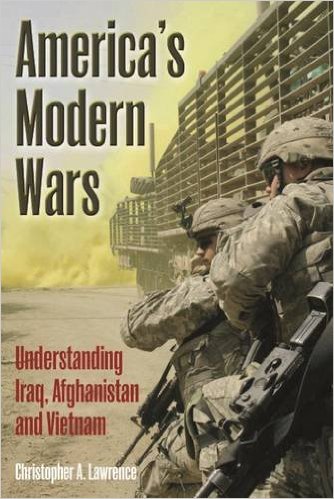
Just to reinforce Shawn Woodford’s point below, let me quote from Chapter Twenty-Four, pages 294-295, of my book America’s Modern Wars: Understanding Iraq, Afghanistan and Vietnam:
Many years ago, I had the pleasure of having a series of meetings with Professor Ivo Feierabend. I was taking a graduate course in Econometrics at San Diego State University (SDSU). I decided that for my class paper, I would do something on the causes of revolution. The two leading efforts on this, both done in the 1960s, were by Ted Gurr and the husband and wife team of Feierabend and Feierabend. I reviewed their work, and for a variety of reasons, got interested in the measurements and analyses done by the Feierabends, vice the more known work by Ted Gurr. This eventually led me to Dr. Feierabend, who still happened to be at San Diego State University much to my surprise. This was some 20 years after he had done what I consider to be ground-breaking work on revolutions. I looked him up and had several useful and productive meetings with him.
In the 1960s, he had an entire team doing this work. Several professors were involved, and he had a large number of graduate students coding events of political violence. In addition, he had access to mainframe computers, offices, etc. The entire effort was shut down in the 1960s, and he had not done anything further on this in almost 20 years. I eventually asked him why he didn’t continue his work. His answer, short and succinct was, “I had no budget.”
This was a difficult answer for a college student to understand. But, it is entirely understood by me now. To do these types of analytical projects requires staff, resources, facilities, etc. They cannot be done by one person, and even if they could, that one person usually needs a paycheck. So, the only way one could conduct one of these large analytical projects is to be funded. In the case of the Feierabends, that funding came from the government, as did ours. Their funding ended after a few years, as has ours. Their work could be described as a good start, but there was so much more that needed to be done. Intellectually, one is mystified why someone would not make sure that this work was continued. Yet, in the cases of Ted Gurr and the Feierabends, it did not.
The problem lies in that the government (or at least the parts that I dealt with) sometimes has the attention span of a two-year-old. Not only that, it also has the need for instant gratification, very much like a two-year-old. Practically, what that means is that projects that can answer an immediate question get funding (like the Bosnia and Iraq casualty estimates). Larger research efforts that will produce an answer or a product in two to three years can also get funding. On the other hand, projects that produce a preliminary answer in two to three years and then need several more years of funding to refine, check, correct and develop that work, tend to die. This has happened repeatedly. The analytical community is littered with many clever, well thought-out reports that look to be good starts. What is missing is a complete body of analysis on a subject.
